Celebrity Style
May 9, 2016
Visit Ernest Hemingway’s Famous Home In Key West, Florida
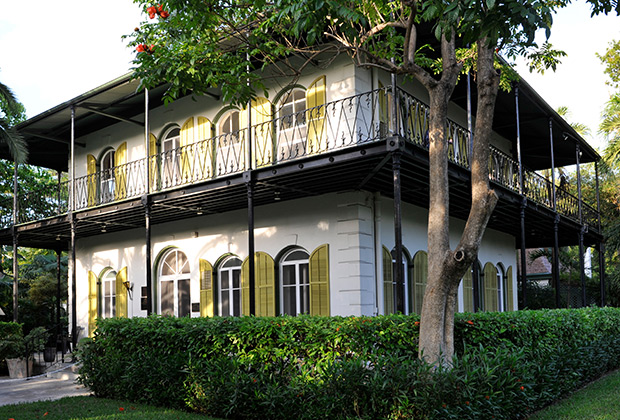
Located at the southernmost tip of the continental United States, Key West, Florida, is surrounded by beautiful turquoise waters, breathtaking sunsets and charming city streets. It also features one of America’s most unique residential properties: the former home of Nobel Prize-winning author Ernest Hemingway. Step back in time and tour the remarkable and eccentric home that witnessed one of the most prolific writing periods in Hemingway’s career.

The home was built in 1851 and was lived in by Hemingway and his family from 1931 to 1939. Now a public museum, the two-storey Spanish Colonial house still retains its original limestone façade and reclaimed cheery yellow shutters.
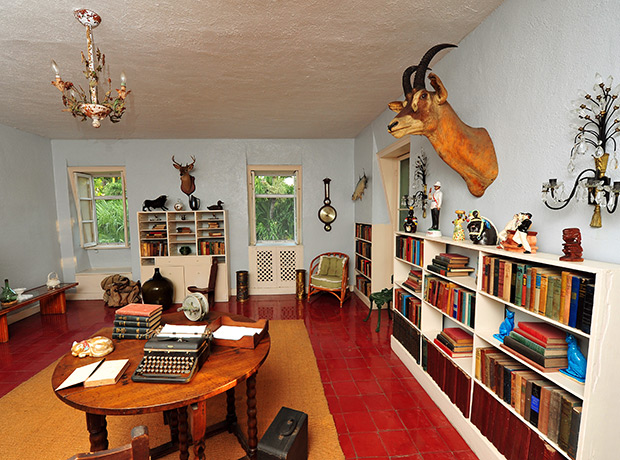
For book lovers, stepping into Hemingway’s personal studio is sure to be a dream come true. Hemingway wrote some of his most famous works while living in the Florida Keys, including The Green Hills Of Africa, To Have And Have Not and most notably, For Whom The Bell Tolls. Hemingway’s original typewriter, leather writing chair and a collection of treasured novels have been preserved as he left them.
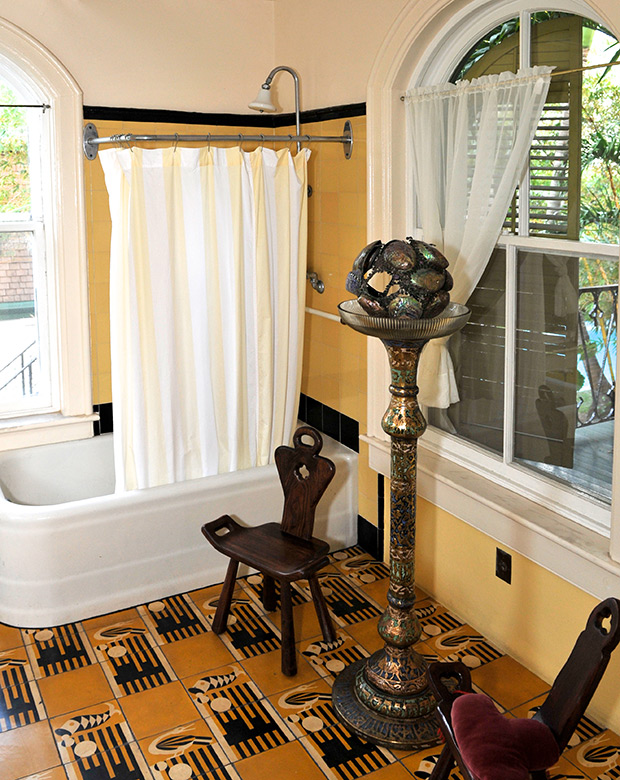
Large, round-top windows shine plenty of light into the striking yellow and black upstairs bathroom. Cement tiles patterned in a bird and fish motif add a dash of whimsy into the utilitarian space, while antique furniture pieces are reminiscent of the early twentieth century. Hemingway’s bathroom was one of the first on the island to be furnished with indoor plumbing and running water.
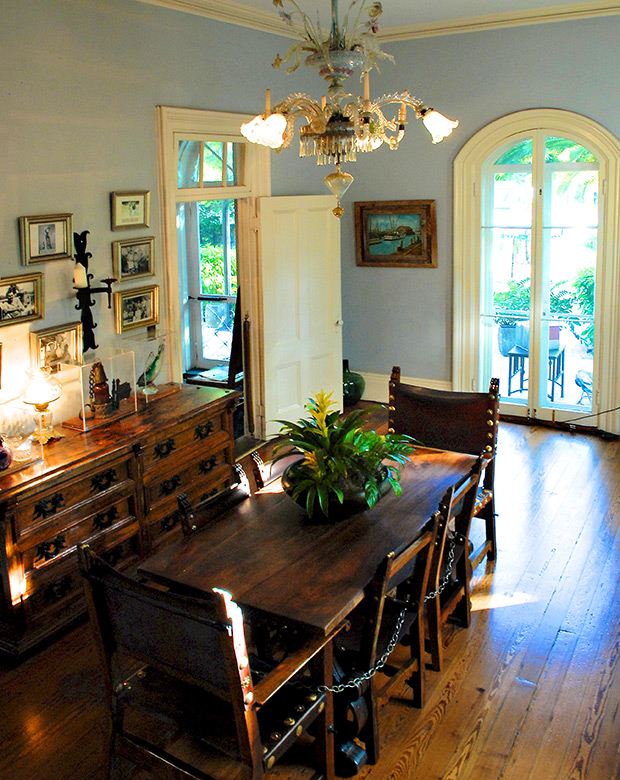
Hemingway’s second wife, Pauline, had her chandelier collection shipped from Paris to Key West when she and Hemingway bought the house. Her glass and porcelain fixtures replaced all of the home’s original ceiling fans. The eighteenth century walnut dining table and eclectic sculptures were carefully maintained by the family.
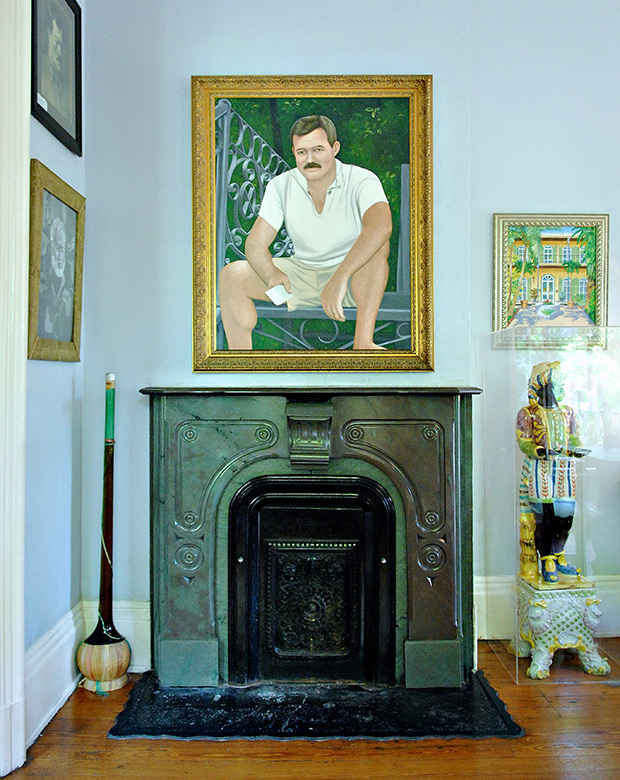
Also unique to the home is the built-in Italian marble fireplace. Hemingway loved art, so it’s fitting that a series of framed paintings and pictures surrounds the fireplace, including one of Hemingway that was hung when the museum opened.
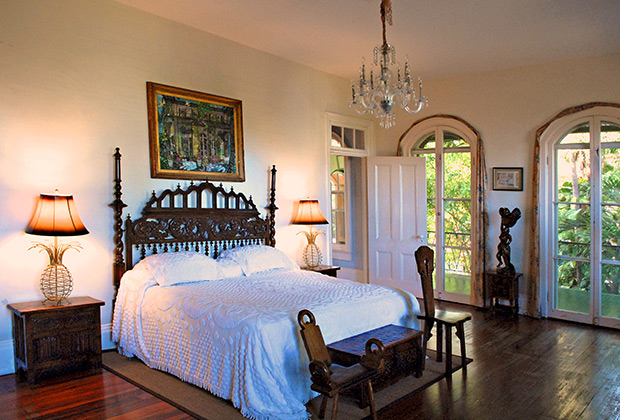
Like his wife Pauline, Hemingway avidly collected furniture. The ornate, dark wood Spanish headboard is the highlight of the master bedroom and is believed to date back to the 17th or 18th century. Avant-garde pineapple lamps add flare to the bedroom’s otherwise traditional furnishings.
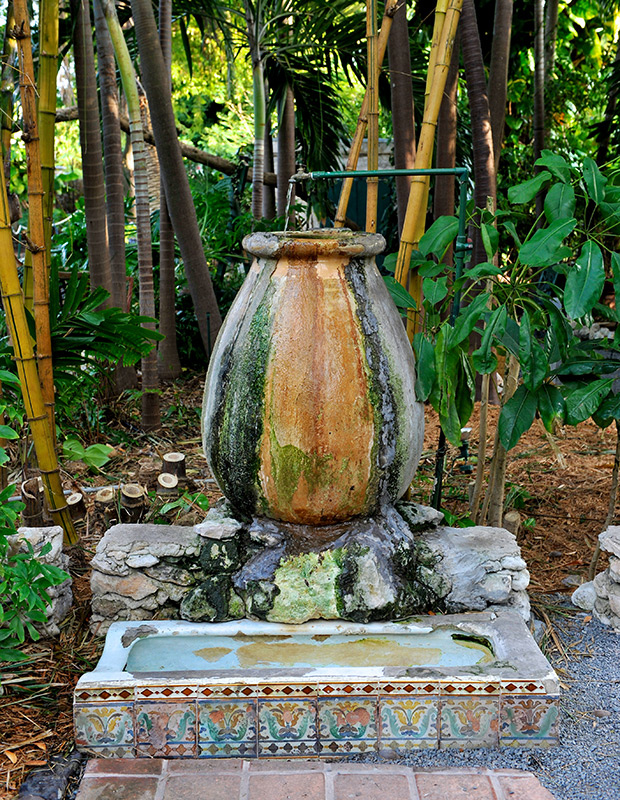
One of the most unique features of the grounds is the two-piece water fountain, the base of which was once a functioning urinal at Hemingway’s favorite Key West bar, Sloppy Joe’s Bar. When the venue moved locations in 1937, Hemingway remarked to the owner that he had spent enough money at the bar to own a small piece of it; in return, he was gifted the colorful, flower-patterned urinal. Pauline Hemingway quickly had it adorned with an old Spanish olive oil jar from Cuba, and fitted it with plumbing.
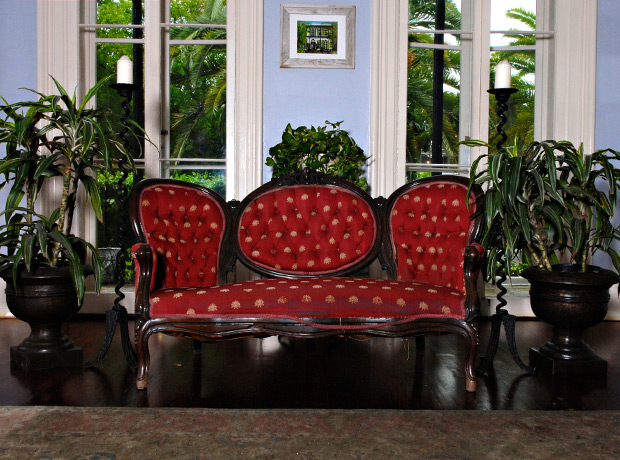
Dark hardwood floors offset an antique tufted sofa, which can be found in one of the home’s more formal living areas. Handsome black corkscrew-shaped candleholders flank either side of the sofa, while tropical plants and floor-to-ceiling windows bring the natural beauty of Florida indoors.
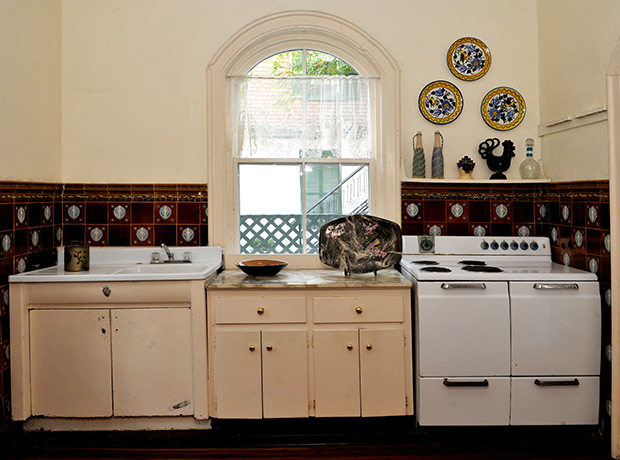
In the Hemingway kitchen, deep red Spanish-style tiles contrast against faded peach-colored cabinets and off-white walls.
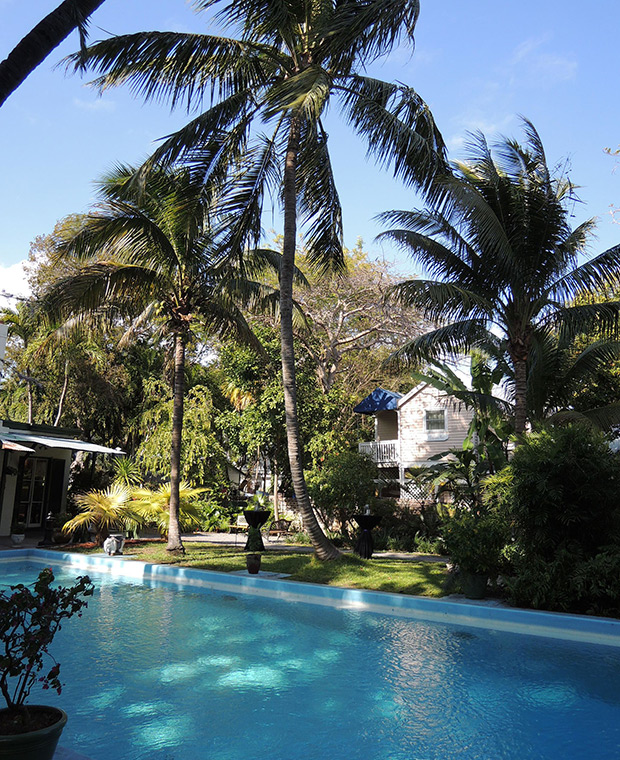
While Hemingway paid only $8,000 for his home, the built-in pool cost a staggering $20,000 to complete. Constructed during the winter of 1937-1938, the pool was built using solid coral and remains the largest on Key West to this day at 24 feet wide, 60 feet long and 10 feet at its deepest point.
Hemingway was reportedly so angered by the pool’s tremendous cost that he pressed a cent into the concrete during its construction, exclaiming, “You might as well have my last penny!” The penny can still be viewed today.

